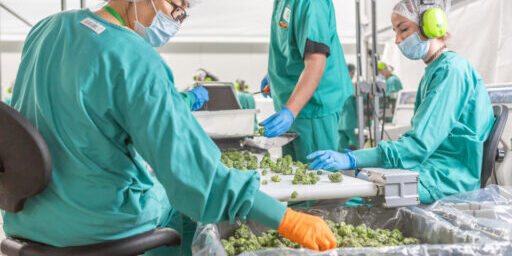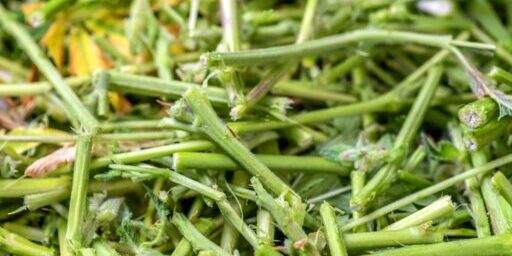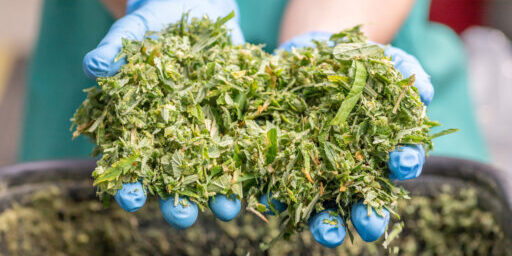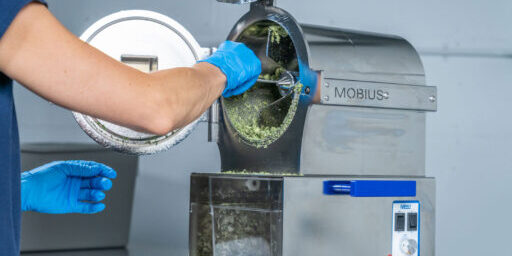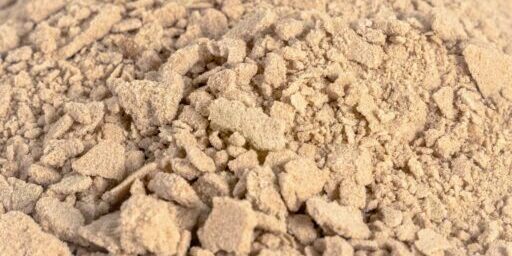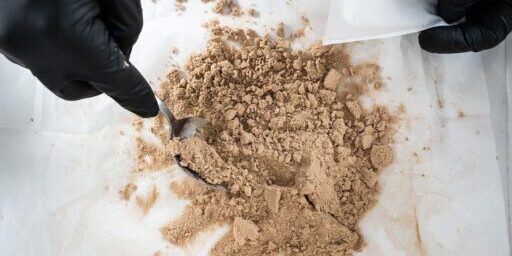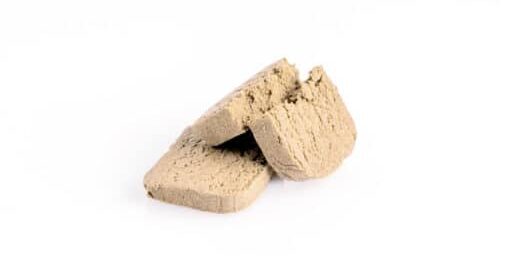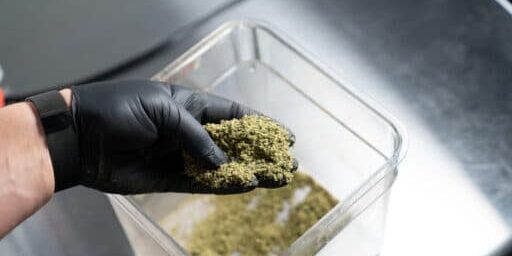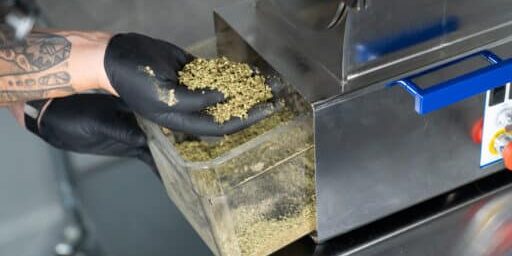When and How to Harvest Cannabis for Maximum Trichome Retention
For optimal trichome retention and a highly potent product, you need to know when and how to harvest cannabis. The appearance of trichomes and pistils helps you determine when to harvest. And the selection and combination of hand trimming, machine trimming, dry trimming, and wet trimming will determine how well you retain trichomes during the harvesting process.
Preserving trichomes is an important part of harvesting cannabis. Trichomes are resin glands and store cannabinoids like THC and CBD, making their preservation vital for the most potent and highest-quality harvested cannabis flowers.
Here we’ll offer a complete guide for preserving trichomes on cannabis, including why they’re so important, whether wet or dry trimming works better for trichome preservation and the best time to harvest cannabis plants to ensure optimal trichome retention.
Why Preserving Trichomes On Cannabis Is So Important
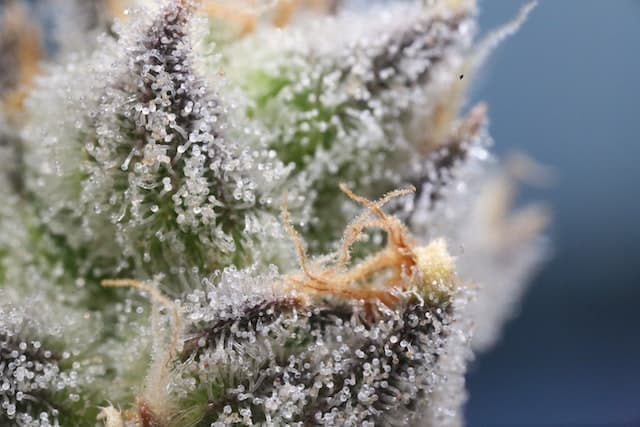
If you look close, you’ll notice cannabis flowers are covered in small crystals. These crystals are known as trichomes, and they begin to develop when a female cannabis plant enters the flowering stage of growth.
The word “trichome” stems from the Greek word trikhōma, which translates to “growth of hair,” and trichomes appear as sticky resinous hairs that cover the buds and small leaves of cannabis flowers.
Trichomes are largely considered one of the most important parts of the cannabis plant, as it is in these resinous glands that cannabinoids, terpenes, and flavonoids are formed.
A cannabis flower contains three different types of glandular trichomes, including:
- Bulbous Trichomes
- Bulbous trichomes are the smallest of the three cannabis trichomes. They’re so small (approximately 20 micrometers) that they’re only visible with a microscope. They are typically found on stems and leaves, with only a small portion appearing on cannabis flowers.
- Bulbous trichomes are the first of the three trichomes to turn amber, which is typically a sign that cannabis flowers are ready to harvest.
- Bulbous trichomes don’t contain cannabinoids, although some suggest they may contribute to the formation of CBGa (the acidic precursor to CBG from which all other cannabinoids stem).
- Capitate-Sessile Trichomes
- Capitate-sessile trichomes are the most abundant of the three trichomes on the cannabis plant. They’re of medium size (approximately 75 micrometers) with a long stem that contains a round tip, and they are barely visible to the naked eye.
- Capitate-sessile trichomes contain a moderate amount of cannabinoids and are found on cannabis leaves and flowers.
- Capitate-Stalked Trichomes
- Capitate-stalked trichomes are considered the most valuable glandular trichome, as they produce the majority of cannabinoids and terpenes. They are structurally similar to capitate-sessile trichomes, only much larger (approximately 500 micrometers).
- Easily visible to the naked eye, these trichomes appear as a long stalk with a round bulbous head—very much like mushrooms. They form in abundance during the flowering stage and cover buds, bud sites, and sugar leaves.
- Capitate-stalked trichomes are the most susceptible to damage, and care should be taken to protect these fragile trichomes during cultivation and throughout the harvesting process.
The main reason trichomes are considered so important is because they contain cannabinoids, terpenes, and other compounds, all of which affect the quality and potency of harvested cannabis flowers. They also serve a significant role in protecting cannabis plants from predators. Trichome production begins when the marijuana plant reaches the flowering stage of its life cycle. When cannabis flowers begin to mature, the plant becomes increasingly susceptible to various predators. Trichomes act as a defense mechanism, as the bitter flavor and strong aroma of the resin glands serve to deter animals and insects.
Determining When To Harvest Cannabis For Maximum Trichomes
Trichomes and pistils are two of the most accurate visual indicators for determining when cannabis bud is ready to harvest. They provide insight into that perfect harvest window for your cannabis crop.
Along with these indicators, cannabis cultivators can use chemical lab testing if they have access to equipment.
Why Experts Often Disagree about When to Harvest Cannabis
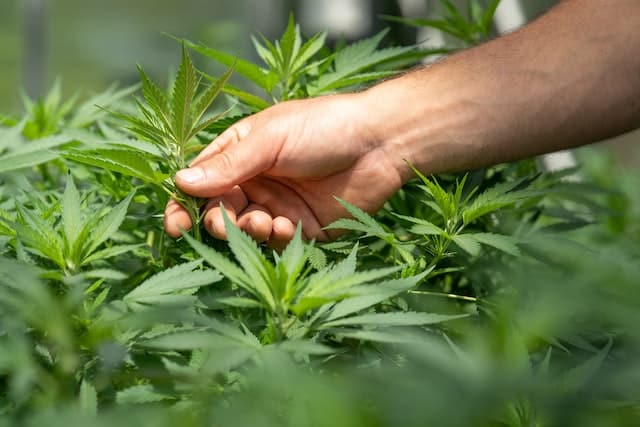
Experienced growers offer conflicting advice on when to harvest. There are many reasons for the differences in opinion, including personal preference. Cannabis harvested earlier will have a more uplifting, cerebral effect. Cannabis harvested later will be more calming.
Further, some of the confusion comes from the plant itself. Strains – more accurately called cultivars – express their ripeness differently. The indicators for when to harvest can take a different amount of time for each to reach that ideal harvest window.
Moreover, connoisseurs value individual cultivars for their unique chemical profiles. Some strains lend themselves to a more cerebral effect, meaning they would benefit from an earlier harvest. Other strains may fare better with a later harvest.
In terms of chronology, some Sativa cultivars prefer a seemingly endless “summer” and a 16-week flowering period. At the opposite extreme, Indicas may flower in as little as 5 weeks.
What’s more, cannabis flowers mature unevenly across an individual plant. The top flowers receive more light than the bottom flowers. Because the lower flowers get less light, they are often less potent and have fewer trichomes, the THC-rich resin glands. All these factors make knowing when to harvest cannabis confusing, and they can affect your harvest planning and standard operating procedures, too. But the following rules hold true. And if you pay close attention to your plants and observe the indicators, you will dramatically increase your chances for a successful harvest.
The Goal in Timing Your Harvest
To ensure maximum THC potency and trichome retention, cannabis growers must harvest marijuana when trichome development has reached a specific point.
Harvest too early and buds will contain low levels of THC. Harvest too late and buds will contain somewhat lower levels of THC and more CBN, which can lead to a more sedating effect.
Because female cannabis plants spend their final days focused on resin production, cultivators must take them down during the brief window of their peak ripeness – before the medicinal compounds start to degrade.
Of those medicinal compounds, tetrahydrocannabinol (THC) and cannabidiol (CBD) are the best known. But cannabigerol (CBG) also plays an important role.
CBG is a precursor to THC and CBD. It slowly converts to THC and CBD throughout the flowering phase. As a result, peak trichome retention comes when the CBG levels are near zero.
However, if you wait too long after CBG levels reach negligible amounts, the THC will degrade into cannabinol (CBN). While CBN has some sedative/anti-anxiety effects, most users prefer higher THC and CBD concentrations.
In summary, the goal in harvesting for peak trichome retention is to time that small window where both CBG and CBN are very low. Too early, CBG will be too high. Too late, and CBN will be too high.
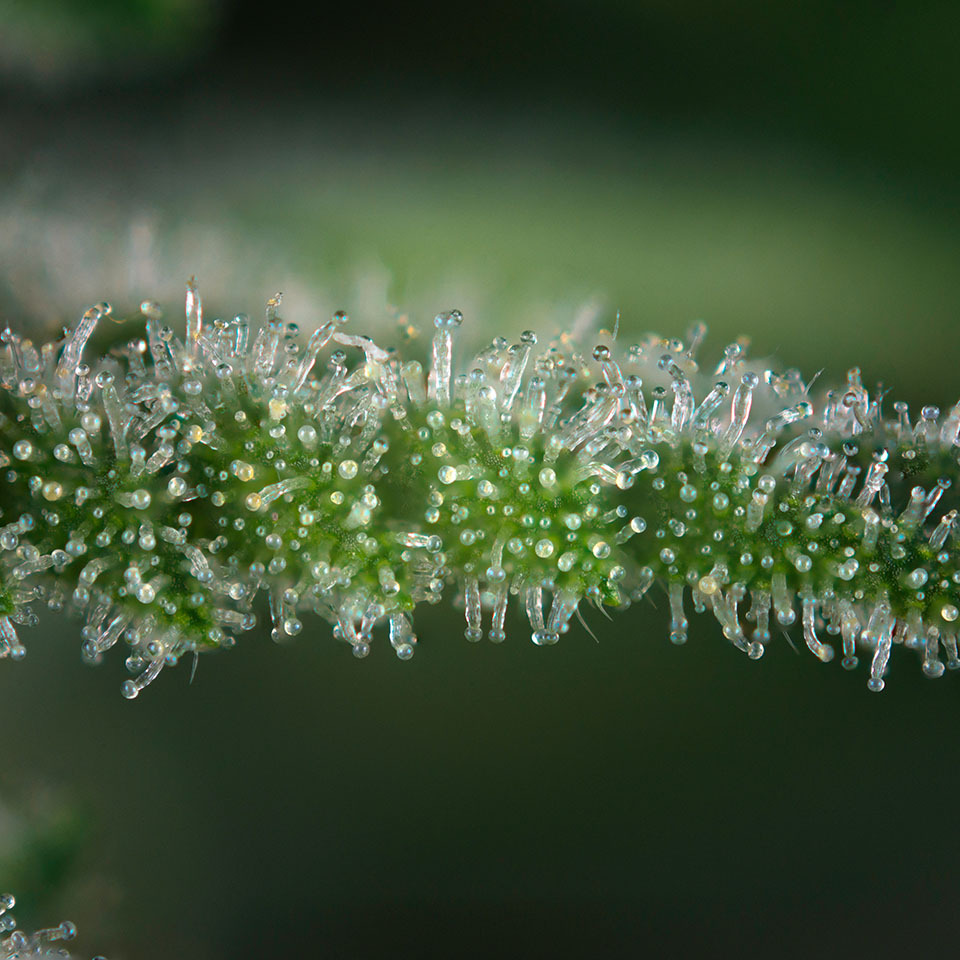
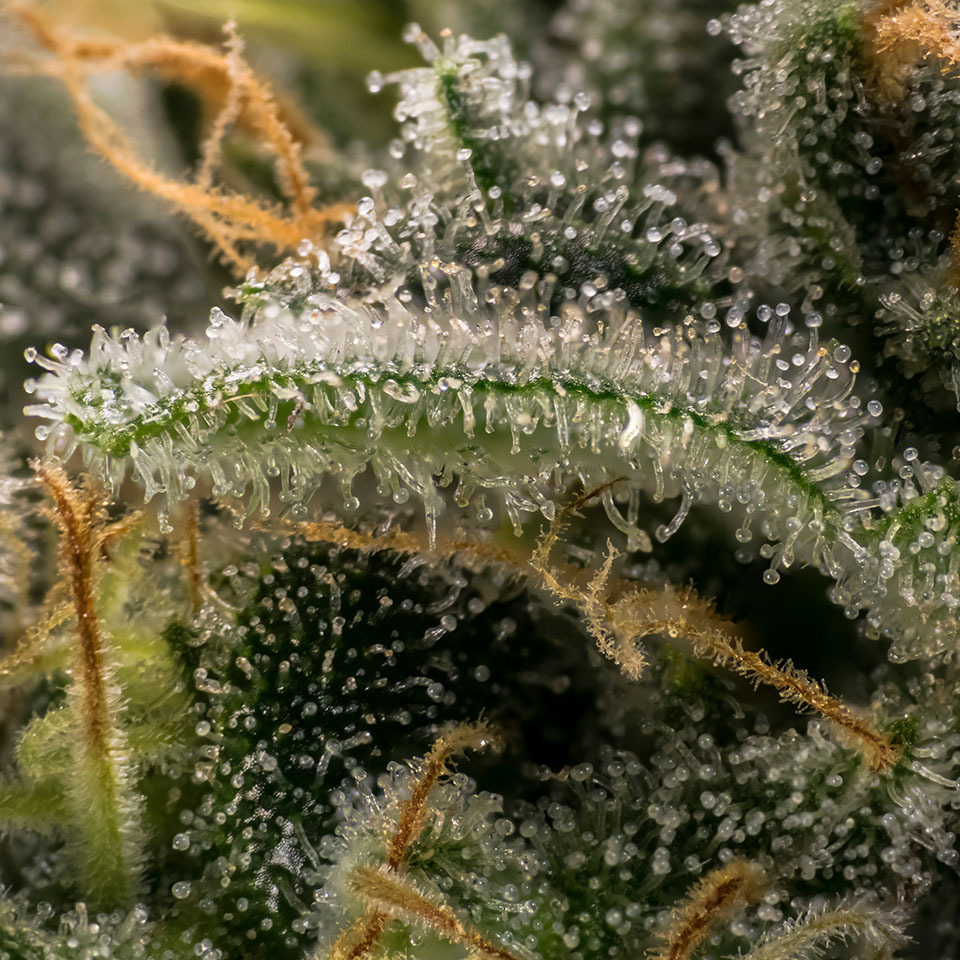
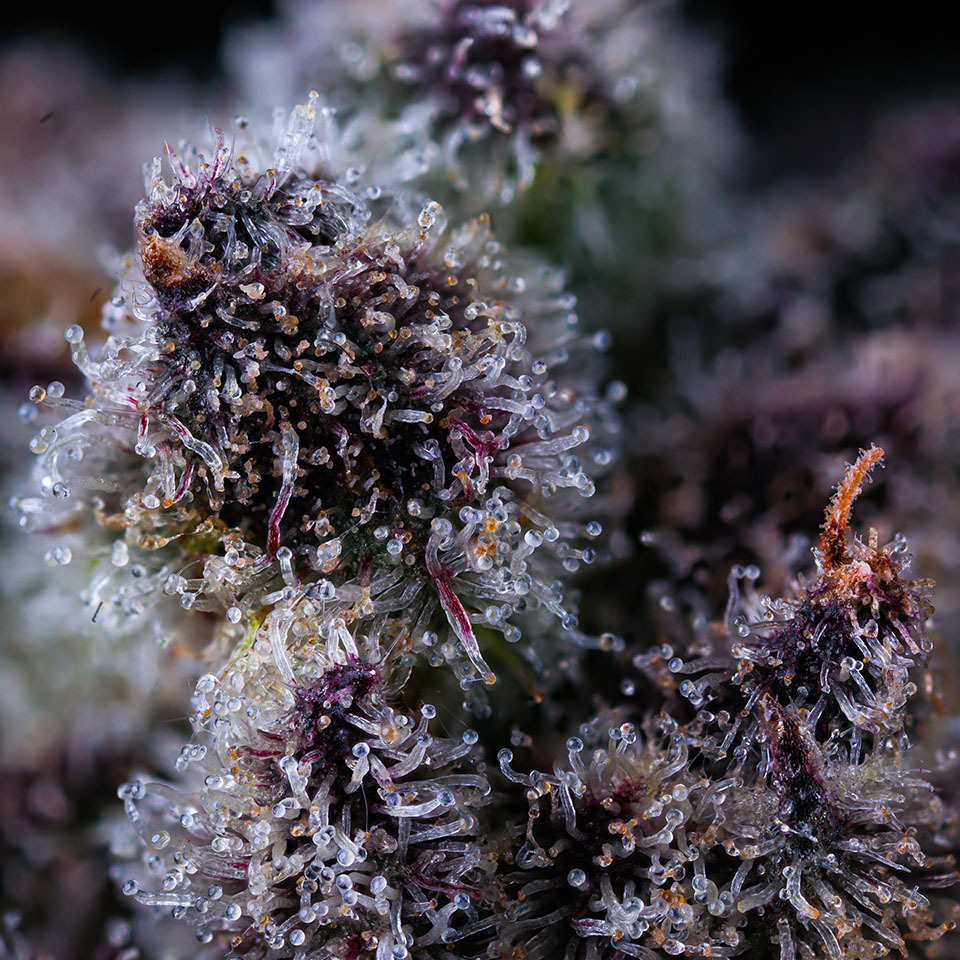
The Trichome and Pistil Method
Knowing when to harvest weed for best trichome retention all comes down to trichome and pistil color. Consumers often refer to pistils as “hairs” – and with good reason. The slender, white pistils point outward from the flower’s calyx, attempting to receive pollen and produce seeds.
Using a magnifier, jeweler’s loupe or digital microscope is the best way to identify trichomes and pistils to determine if marijuana plants are ready to harvest.
Examining Trichomes
Keeping in mind that capitate-stalked trichomes contain the highest levels of THC, these are what you’ll want to look for when determining harvest time for optimal trichome retention. Look for trichomes that resemble tiny mushrooms with a bulbous head, as this is where most of the THC, CBD, and other beneficial compounds are contained.
Once capitate-stalked trichomes have been identified with a magnifier, you’ll want to look at their color. If trichomes are clear they still need time to mature, as they’ll contain very low levels of THC.
A general guideline is to harvest cannabis only if more than half of your trichomes have turned a cloudy, milky color.
Examining Pistils
After evaluating trichomes, if most of the “tiny hairs” or pistils on your buds are white, allow the marijuana plant to continue in the flowering stage until at least 40% of these “hairs” turn an amber hue, and trichomes have gone from clear to predominantly cloudy.
Trichomes that contain the most THC are cloudy or milky. When harvested at this stage, consumers tend to experience the strongest high and medicinal effects. When trichomes are cloudy and ready for harvest, you’ll likely notice that 50-70% of the white “hairs” on your buds have turned amber.
Keep in mind that if you wait too long and trichomes turn amber you will lose THC potency. The key thing to look for is milky, cloudy trichomes, as they contain the highest THC levels.
Checking for THC with Laboratory Testing
Cultivators with access to chemical testing equipment have more control. By tracking their crop’s cannabinoid concentrations, they can pinpoint when THC and CBD are at their peak.
Final THC concentrations are unpredictable. So, when chemical testing, cultivators use a different strategy: they track CBG.
The general guideline here is to harvest marijuana when CBG levels drop close to zero.
When CBG levels approach zero, they know that all of the CBG has converted into more desirable cannabinoids, namely THC and CBD.
Harvesting Cannabis: Machine Trimming vs. Hand Trimming
Growers have two options when it comes to harvesting cannabis: machine trimming and hand trimming.
Machine trimming allows for perfectly manicured buds that can be trimmed quickly. While machine trimmers of the past would over-trim buds and destroy valuable trichomes, advances in technology have led to machine trimmers that preserve cannabis trichomes.
Hand trimming has been used for years, and while much slower than machine trimming, skilled trimmers with meticulous attention to detail can preserve cannabis trichomes.
Which is better for preserving precious trichomes on cannabis? Here we’ll take a look at the pros and cons of each to gain a better understanding of which method might be best for you.
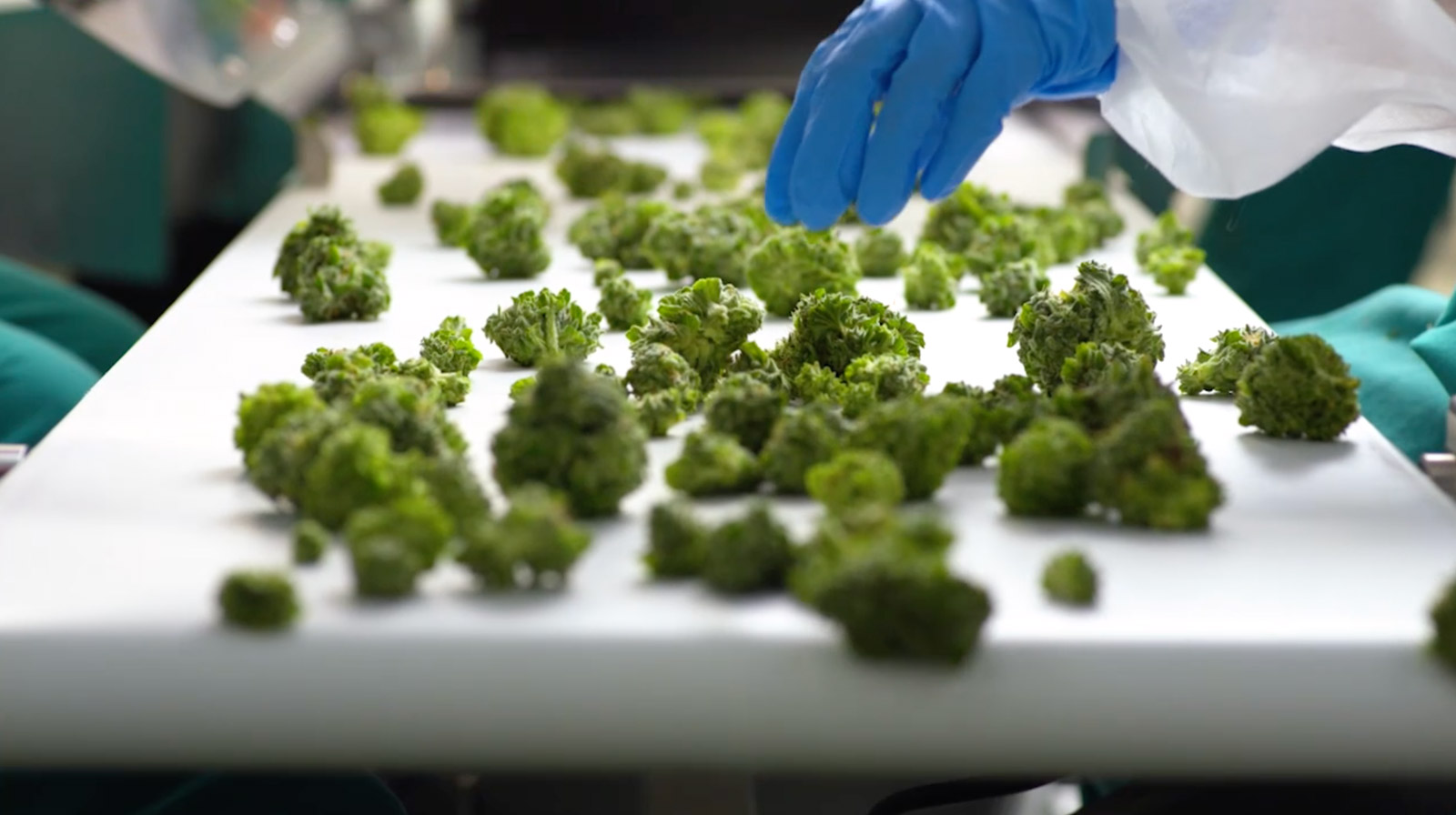
Talk to a harvest expert about getting perfectly trimmed flower today.
Hand Trimming
Pros:
- Low up-front cost
- Appealing to the eye
- Ability to highlight an individual strain’s unique features
Cons
- Time-consuming
- High labor costs
- Requires hiring and managing trimmers
- Only beneficial for small operations, as commercial growers typically have large amounts of product that must be processed
Machine Trimming
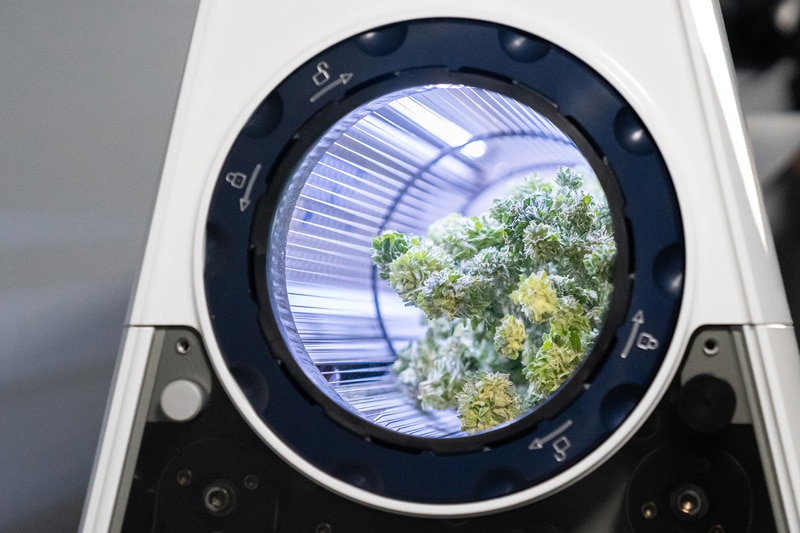
Pros:
- Perfectly trimmed buds appealing to the eye
- Increased ease and efficiency of trimming large quantities of cannabis
- Advances in technology allow for increased trichome retention
- Good for small, medium, and large grow operations, eliminating the need to hire and manage trimmers
Cons:
- Low-quality machine trimmers can reduce the appearance of buds
- Some machine trimmers can be noisy to run
- The initial cost for high-quality machine trimmers can be expensive (investment is returned over time, however, with saved labor costs)
Wet Trimming vs. Dry Trimming: Which Is Better For Preserving Trichomes On Cannabis?
Wet trimming or dry trimming is something else growers must decide on when harvesting cannabis.
Wet trimming involves trimming when cannabis flowers are freshly cut from the plant before they have dried. Dry trimming involves drying cannabis flowers prior to trimming.
Wet trimming is more common than dry trimming, although some growers prefer to trim buds when they are dry. Which is better for trichome retention, though? Wet trim or dry trim?
Talk with one grower, and you’ll be convinced of the merits of wet trimming. But talk with another, and you’ll start questioning the first grower’s judgment and become a staunch proponent of dry trimming.
The reality is that the best method depends on the grower’s strengths, harvesting conditions, and the end product. The debate is alive and well. Here are some advantages and disadvantages of each:
Wet Trimming
Advantages:
- Less material handling
- Trichomes are less brittle when buds are wet, which can reduce breakage and increase retention
- Less susceptible to mold or fungus during the drying process
Disadvantages:
- Must be trimmed immediately after harvest or it becomes more difficult to trim
- Requires more equipment cleanup than dry trimming
Dry Trimming
Advantages:
- The trimming process doesn’t need to be done immediately
- Clean-up of equipment is quicker and easier
Disadvantages:
- Requires more space as plant material must be hung to dry
- Flowers are more susceptible to damage when trimmed dry, which can result in loss of trichomes
- Must remove fan leaves prior to trimming, which increases the labor time
Additional Harvesting Tips for Max Trichome Retention
Harvest in the Morning or Before Lights Come on
Cannabis spends the nocturnal period producing resin and the photoperiod (i.e., daytime) driving photosynthesis. The metabolites involved in photosynthesis may cause a suboptimal taste.
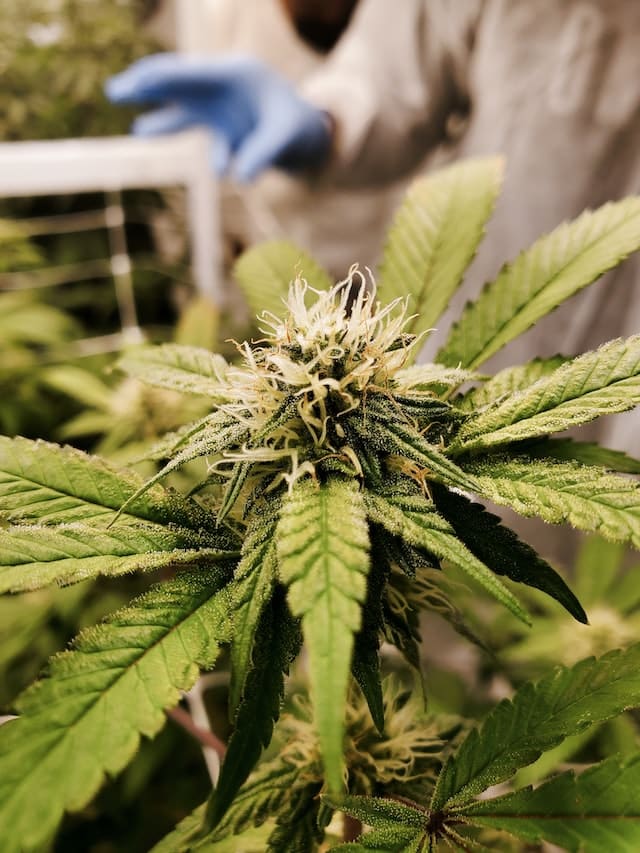
Consider a staggered harvest
Because the top portions of the plant mature more quickly, you may choose to harvest those parts first and give the bottom flowers another week to build potency and trichome density.
Have a complete harvest plan
For large grow ops, harvest preparation starts months in advance – long before any trichomes turn milky. Preparation includes staff training, equipment purchases, and detailed standard operating procedures (SOPs) for what will happen on harvest day.
Harvesting for Fresh Frozen
If you intend to process your plants using fresh-frozen extraction techniques, harvest several days earlier than you would otherwise.
Frequently Asked Questions
Why is trichome preservation so important when harvesting cannabis?
Trichomes contain THC, CBD, and other cannabinoids, which contribute to the potency of harvested buds. Trichomes also contain other cannabis compounds like terpenes and flavonoids, both of which lend to the unique effects of various cannabis strains. By preserving trichomes on cannabis when harvesting, you substantially increase the potency and quality of your product.
How do you identify trichomes on cannabis?
Trichomes are the crystally resinous “hairs” that cover cannabis buds and leaves. They appear when plants begin to flower. Because each cannabis trichome is so small, they are best identified with a magnifier or jeweler’s loupe.
Is hand trimming or machine trimming better for preserving trichomes?
While skilled hand trimming can be beneficial for trichome retention, advances in machine trimming technology now offer increased trichome preservation. Not only do machine trimmers preserve trichomes on cannabis, but they also offer increased ease and efficiency for both small and large-scale operations interested in high-quality trimmed cannabis.
Is wet trimming or dry trimming better for trichomes?
Most growers agree that wet trimming is superior to dry trimming for trichome retention, as trichomes are more susceptible to damage when they are dry and brittle.
How Mobius Equipment Helps You Preserve Trichomes During Your Cannabis Harvest
Whether you run a small-scale farm or commercial operation, quality is everything when it comes to harvested cannabis. If you’re interested in top-shelf trichome preservation, Mobius products can help.
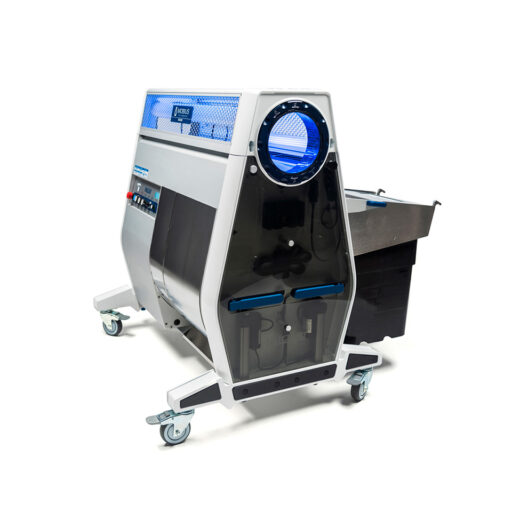
Take the Mobius M108S Trimmer, for example. Its innovative design was created with the highest-quality trimmed cannabis in mind. Advanced technology increases trichome retention, leading to increased potency and a higher quality product. It can be used for wet or dry trimming and is easy to clean. It is also Good Manufacturing Practices (GMP) ready, for hassle-free compliance.
Investing in a Mobius M108S Trimmer is one of the best options for cultivators interested in a machine trimmer designed to preserve trichomes on cannabis for a high-quality harvest.
